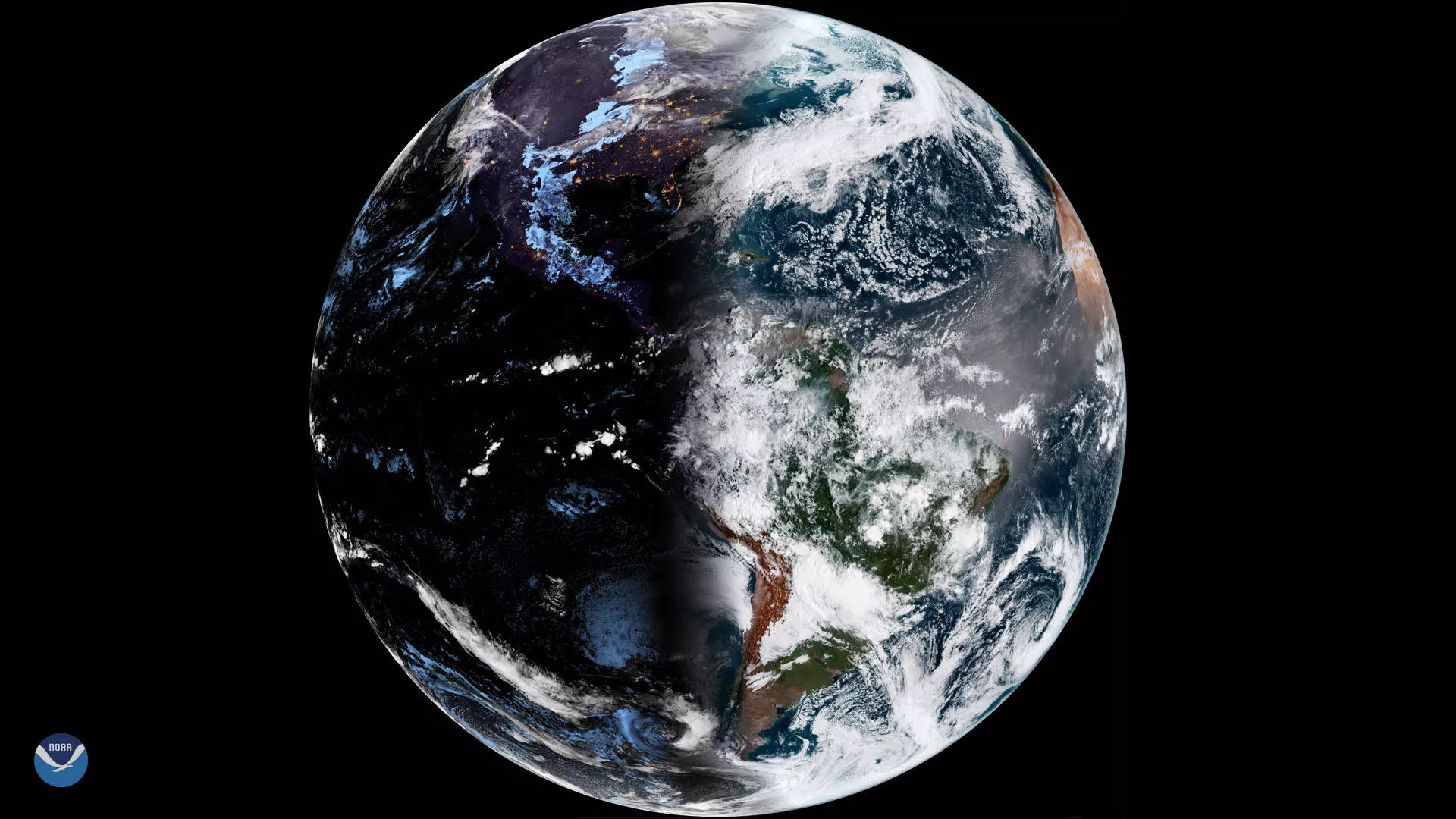
There are two times each year, in March and September, when the amount of daylight and darkness is “nearly” equal at all latitudes. This phenomenon, commonly referred to as an equinox, happens when the Earth’s axis is tilted neither toward nor away from the sun. During an equinox, the sun is directly over the equator at noon.
“The ‘nearly’ equal hours of day and night is due to refraction of sunlight, or a bending of the light's rays that causes the sun to appear above the horizon when the actual position of the sun is below the horizon,” according to the National Weather Service.
On Wednesday, March 20, 2019, at 5:58 p.m. ET the Earth will be at its equinox, marking the first astronomical day of spring. This differs from meteorological spring, which began on March 1.
So what does all of this mean for you? Well, if you live in the Northern Hemisphere, this means it’s time to soak up the sun because the days will be longer at higher latitudes!
(Note: This GOES East image was captured on March 20, 2019, at 8 a.m. ET prior to the equinox)
